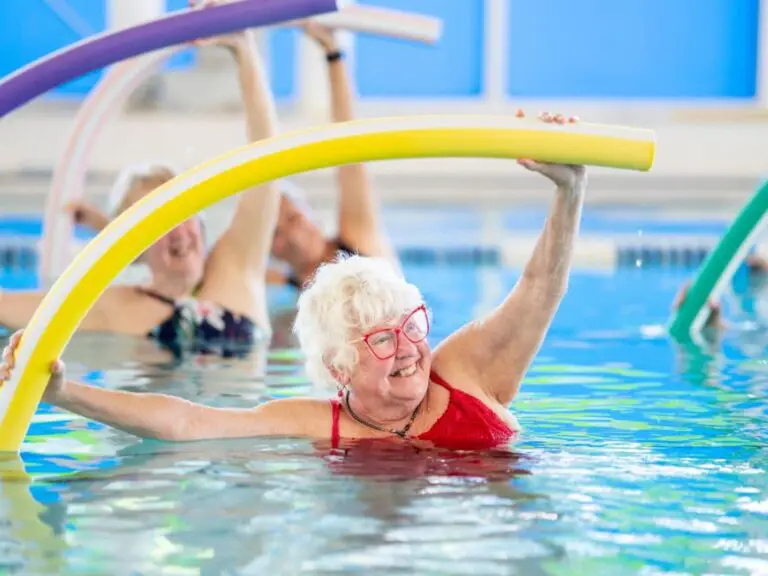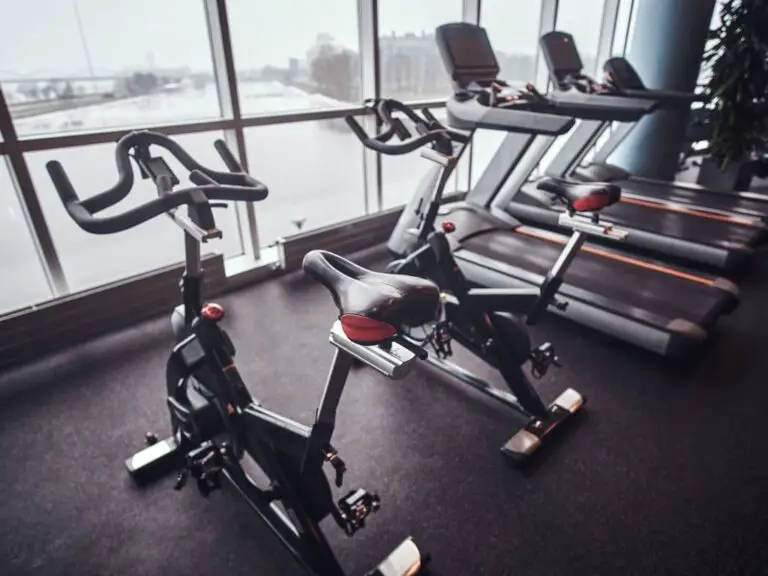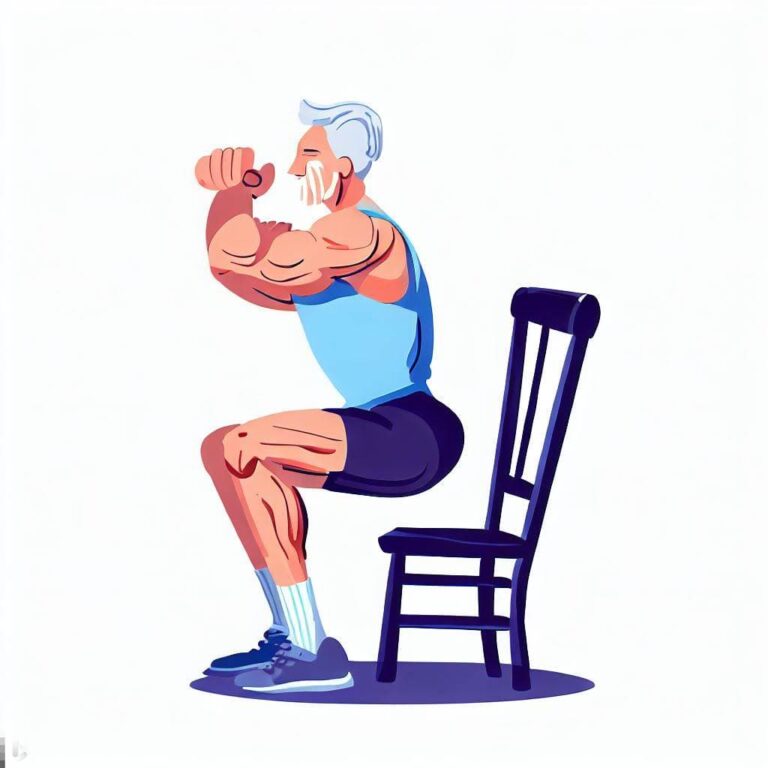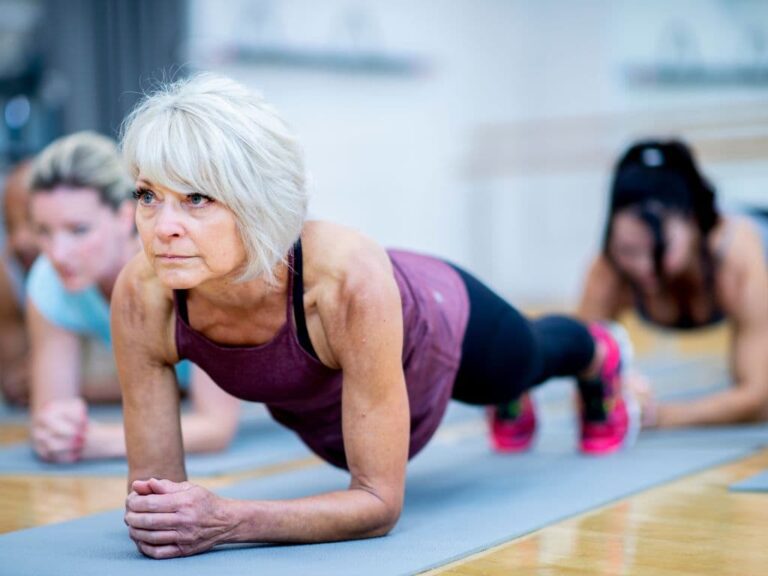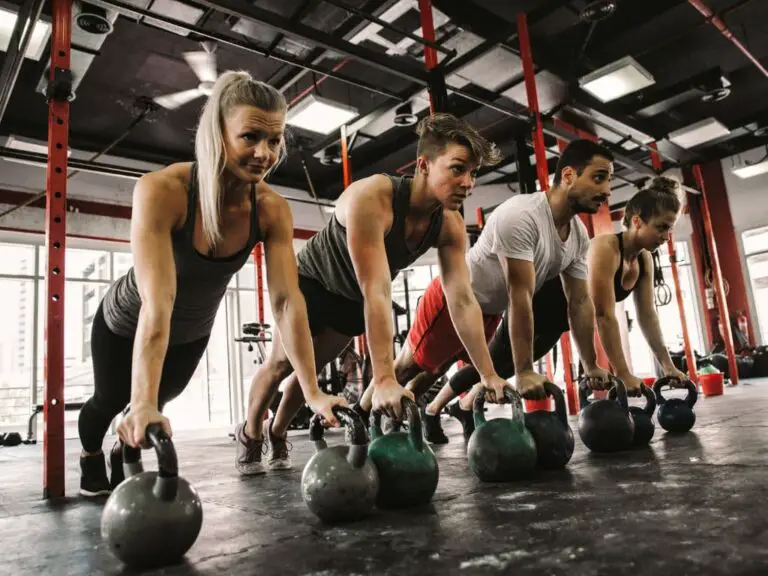How Long Should a 70 Year Old Ride an Exercise Bike?
Riding an exercise bike, also known as a stationary bike or indoor cycling bike, offers many benefits for seniors aged 70 and older who are looking to improve their cardiovascular health, muscle strength, bone density, and weight loss. Some key benefits include:
- Improving cardiovascular fitness and aerobic capacity
- Building strength in the legs, hips, and glutes
- Maintaining joint mobility and reducing stiffness
- Boosting metabolism and aiding weight loss
- Increasing bone density to prevent osteoporosis
- Enhancing balance and stability
- Providing a safe, low-impact exercise option
- Reducing stress and boosting mood through release of endorphins
- Supporting healthy aging and improved quality of life
For 70-year-olds focused on longevity, incorporating cycling into their weekly exercise routine can have huge payoffs for their overall fitness and health.
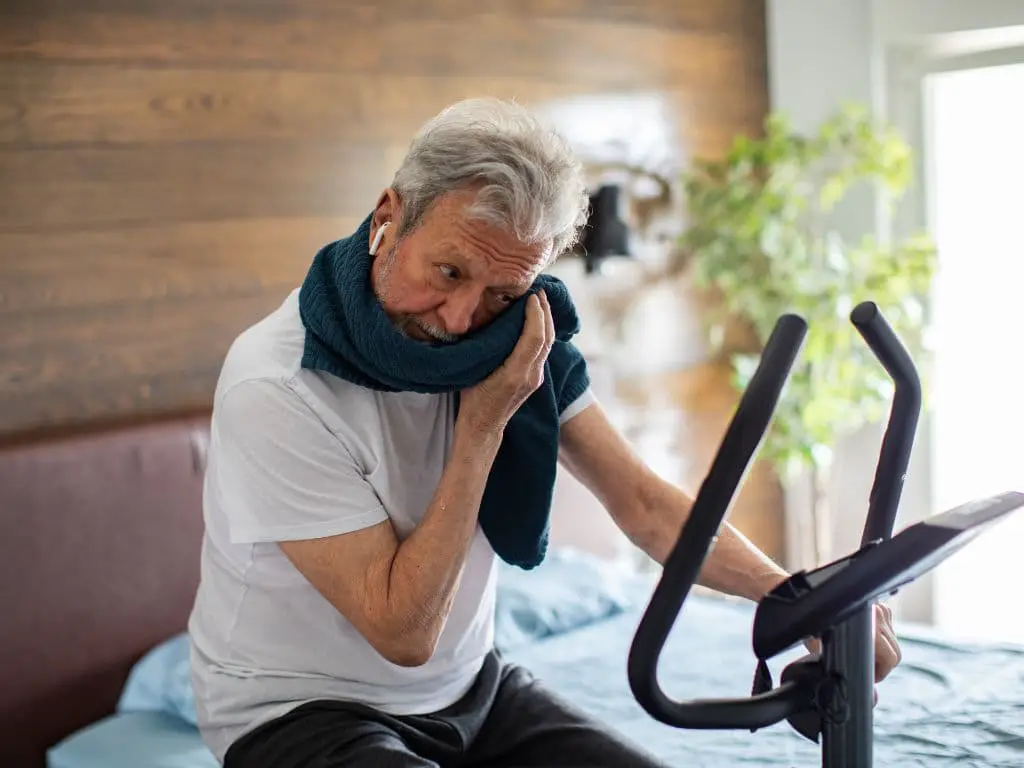
How long should a 70-year-old ride an exercise bike for each session?
A 70-year-old should initially ride an exercise bike for about 10-15 minutes per session, 2-3 times per week, slowly building up to 30 minutes per session. As fitness improves, the duration could be increased to 45-60 minutes per session. The intensity should be such that it raises the heart rate and produces a light sweat without overexertion, usually a moderate intensity where the individual can still speak short phrases.
There is no single prescription for how long a 70-year-old should ride an exercise bike during each session. The appropriate duration depends on the individual’s current fitness level, health status, and exercise goals. Here are some general recommendations:
- Beginners: Start with 10-15 minutes per session, 2-3 times per week. Gradually increase duration to work up to 30 minutes per session.
- Intermediate: Aim for 30-45 minutes per session, 3-4 times per week. Can increase to 60 minutes as able.
- Advanced: 45-60 minutes per session, 4-5 times per week is ideal. More experienced riders may aim for 60-90 minutes.
Other factors like exercise intensity and whether interval training is incorporated impact session duration as well. As a general guideline, aim for a cumulative total of 150 minutes of moderate aerobic activity or 75 minutes of vigorous activity per week, such as cycling.
Spreading rides out over at least 3 days per week and taking rest days in between sessions is ideal to allow muscles recovery time. Consistency over time brings the greatest benefits.
What intensity should a 70-year-old ride an exercise bike at?
Finding the right exercise intensity is crucial for 70-year-olds riding a stationary bike. The aim is to raise the heart rate and work up a light sweat without overexerting. Recommended intensity levels include:
- Low Intensity: 60-70% max heart rate. Can speak short sentences. Perceived exertion is fairly easy.
- Moderate Intensity: 70-80% max heart rate. Can speak short phrases. Perceived exertion is somewhat hard.
- High Intensity: 80-90% max heart rate. Can say a few words. Perceived exertion is hard to very hard.
A good starting point is riding at a moderate intensity for 30-45 minutes per session. Seniors can use tools like heart rate monitors or ratings of perceived exertion to gauge intensity. Interval training by alternating moderate and high intensity intervals is also an option.
Maintaining proper bike settings and posture is key to prevent injury and excessive strain. Adjust seat height so there is a slight bend in the knee at the bottom of the pedal stroke. Sit upright keeping back straight. Grip handlebars lightly.
What are some safety precautions to take when riding an exercise bike as a 70-year-old?
Taking appropriate safety precautions is vital for 70-year-olds using exercise bikes to reduce injury risk:
- Consult a doctor before starting – get medical clearance and recommendations for your fitness level.
- Use bike settings properly – set seat height, handlebar position, and resistance appropriately.
- Wear proper footwear – closed-toe athletic shoes secured to pedals.
- Hydrate before, during, and after riding.
- Warm up & cool down – ride easy 5-10 mins before/after workout.
- Listen to your body – don’t overdo it. Stop if you feel pain, dizziness, nausea.
- Maintain proper form – avoid rounding shoulders or gripping handlebars too tight.
- Check equipment – inspect bike before rides, keep it well-maintained.
- Use safety features – clips, straps, railing for getting on/off.
- Supervise initially – have someone watch you ride if new to cycling.
Following safety best practices helps ensure 70-year-olds can enjoy cycling as part of their senior fitness routine safely.
What are some alternative exercises that a 70-year-old can do if they can’t ride an exercise bike?
For older adults unable to use a stationary bike safely or comfortably, there are many other low-impact aerobic exercises that provide similar cardiovascular and muscle strengthening benefits:
Walking:
- Outdoors or treadmill
- Try intervals of brisk walking and casual strolling
Water Aerobics:
- Offered by many gyms, community centers, YMCAs
- No impact, good for joint mobility
Recumbent Bike:
- Seated reclined position, back supported
- Gentle on joints, easy to get on/off
Elliptical:
- Gliding motion reduces joint impact
- Upper and lower body workout
Rowing Machine:
- Full-body workout, engages core
- Low-impact, adjustable resistance
Swimming:
- No-impact, builds endurance
- Works all major muscle groups
Chair Exercises:
- Seated cardio and strength routines
- Use resistance bands, small weights
Finding an activity you enjoy is key to staying consistent. Mixing upexercises keeps workouts interesting while providing variety. Consult a trainer to find suitable alternatives if unable to bike.
How should seniors start an exercise bike routine?
Here are some useful tips to help seniors successfully start and stick to a new stationary bike workout routine:
- Choose a well-fitted bike appropriate for your height and weight
- Adjust the seat height so your knee is slightly bent at the bottom of the pedal stroke
- Start slowly – 10-15 minutes, 2-3 times per week to build a habit
- Warm up for 5-10 minutes with light, easy pedaling before workouts
- Cool down with 5-10 minutes of gentle riding after workouts
- Vary your workouts with intervals, hills, varied resistance levels
- Monitor your heart rate and perceived exertion level
- Stay hydrated by drinking water before, during, and after rides
- Refuel with a healthy snack or meal within an hour after riding
- Listen to music or watch television to prevent boredom
- Vary your position by sitting upright or leaning forward over handlebars
- Stretch major muscle groups after cycling to aid recovery
- Rest 1-2 days between cycling sessions to allow muscle recovery
- Reward yourself after consistent training, like a new outfit after 1 month
Starting slowly and building consistency over time is key to success. Riding an exercise bike is a sustainable, joint-friendly cardio activity 70-year-olds can enjoy for years to come.
What should 70-year-olds wear for indoor cycling?
Selecting appropriate cycling attire can enhance comfort and performance for 70-year-olds using an indoor exercise bike. Recommended apparel includes:
Tops:
- Breathable fabrics like lightweight cotton, moisture-wicking performance fabrics
- Close-fitting but not restrictive
- Light colors to reflect heat
- Reflective elements for visibility
Bottoms:
- Padded bike shorts or leggings to prevent chafing
- Flexible fabrics that allow free movement
- Avoid loose clothing that could get caught in bike mechanisms
Socks:
- Synthetic or wool socks to wick moisture, prevent blisters
- Well-fitted, not too thick
- Check for wear if using cycling shoes with cleats
Shoes:
- Cycling shoes that attach to pedals or closed-toe athletic sneakers
- Proper fit with room for toes and secure fastening
- Flexible sole, moderate heel and arch support
Layers:
- Shed layers as you warm up, add as you cool down
- Lightweight windbreaker or vest prevents sweat chill
Dressing in breathable, flexible fabrics helps regulate body temperature during cycling sessions while wicking sweat. Having appropriate cycling attire can maximize comfort and prevent injury as 70-year-olds reap the benefits of indoor bike workouts.
How can 70-year-olds progress their exercise bike workouts over time?
For 70-year-olds to continually challenge themselves and get the most out of using an indoor exercise bike, it’s important to incorporate progression over time. Some ways to advance stationary bike workouts include:
- Gradually increase workout duration from 10-15 minutes up to 45-60+ minutes
- Boost pedaling resistance to add workload for legs and lungs
- Add short intervals of high intensity pedaling followed by active recovery
- Perform “hill” workouts by simulating climbing up and down hills
- Alternate between sitting and standing while pedaling to engage new muscles
- Vary hand positions on the handlebars to target different upper body areas
- Increase number of rides per week, allowing at least 1 day of rest between sessions
- Set new distance or calorie burn goals to expand endurance
- Take on charity “cycle challenges” – structured training programs lasting 6-12 weeks
- Join group cycling classes at the gym for coaching and camaraderie
- Upgrade to a new bike with enhanced features as skills improve
- Add weight training or yoga on alternate days for cross-training
The key is to continually tweak the workout variables to prevent plateaus. Keeping exercise bike sessions dynamic and engaging will aid 70-year-olds in accomplishing their fitness goals.
What muscle groups does cycling work for 70-year-olds?
While cycling primarily targets the lower body, it provides an excellent whole-body workout for 70-year-olds. Key muscle groups strengthened through indoor cycling include:
Legs:
- Quadriceps – front thighs
- Hamstrings – back of thighs
- Glutes – buttocks
- Calves – for pedaling
Core:
- Abdominals – spinal stabilization
- Obliques – side core muscles
- Lower back – posture support
Arms:
- Biceps – pedaling and holding handlebars
- Triceps – stabilized upper body
- Shoulders – engaged for posture
Other:
- Forearms and grip – holding handlebars
- Cardiovascular system – heart and lungs
By adjusting resistance levels and hand positions on the bike, 70-year-olds can shift focus to target different muscle groups. Off the bike stretching further aids flexibility.
What stretching routine is best after cycling for 70-year-olds?
A good stretching routine is important for 70+ year-olds after finishing a cycling session to improve mobility, prevent injury, and aid recovery:
Hamstrings – Gentle stretches like standing forward bend, seated hamstring stretch
Quadriceps – Holding foot behind body or lying supine with flexed hip
Hip Flexors – Kneeling hip flexor stretch, standing or seated
Glutes – Figure 4 stretch while lying down or seated
Calves – Standing calf stretch leaning into wall, bent knee calf stretch
Lower Back – Child’s pose, lying spinal twist, cat/cow pose
Shoulders – Across chest stretches, shoulder rolls, arm circles
Aim to hold each stretch 15-30 seconds. Move slowly and gently, avoiding any bouncing. Focus on major muscle groups used during cycling. Stretch after riding while muscles are warm. Proper stretching enhances recovery between bike sessions for 70+ year-olds.
How can 70-year-olds prevent cycling knee or back pain?
Knee or back discomfort are common cycling issues for seniors. Strategies to prevent exercise bike knee/back pain include:
- Adjust bike fit – proper seat height, handlebar position
- Ride a recumbent bike – relaxed reclining position
- Soft pedaling during warm up/cool down periods
- Keeping cadence between 60-80 RPM to reduce strain
- Avoiding overextending knees or locking elbows
- Alternate sitting/standing to shift pressure
- Maintain upright posture – don’t slouch/round shoulders
- Do strength training to reinforce muscles
- Try gel bike shorts or seat pad to reduce chafing
- Stretch major muscle groups after each ride
- Stay hydrated to prevent muscle cramps
- Listen to your body and don’t overdo length/intensity
- Consult a physical therapist to correct any imbalances or weaknesses
Paying attention to bike fit, posture, intensity level and proper recovery helps 70-year-olds prevent aches and pains from cycling. Don’t ignore any discomfort – seek medical guidance to avoid further issues.
Conclusion
Riding a stationary bike regularly provides 70-year-olds with an array of physical and mental health benefits that can dramatically improve quality of life. Starting slowly and gradually building up duration and intensity is key. Following safety precautions, using proper form, stretching, and varying workouts will help seniors safely achieve fitness goals. Indoor cycling is a sustainable exercise 70-year-olds can enjoy for many years to come. Consistency over time brings optimal results.

